|
|
|
|
|
|
|
 |
|
 |
|
| The Bressan family crest was created to reflect the soul, the aspirations, the intentions and respect for tradition of a family that has never left anything to improvisation. |
|
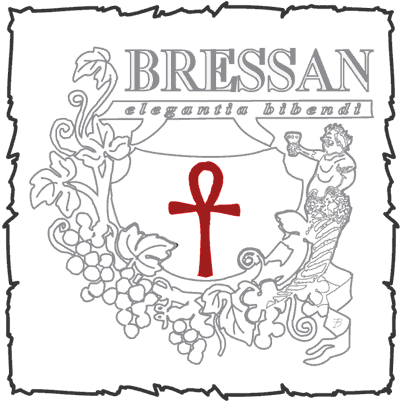 |
|
If we want to analyze it in its components, the first image we are struck by is the Egyptian cross (or Ankh) in the middle: a symbol the Bressans have chosen as their identification. It appeared for the first time in the hieroglyphic writing of the Egyptians, where it was used to symbolize the fecundation of the Earth by the Sun and Life (for this reason called the Cross of Life as well). It was later adopted by the Christian Egyptians (Copts) as a symbol of the vital force of Christian Cross.
|
|
|
|
We notice that the Ankh is inscribed in a roundish form which represents a cauldron. In ancient culture an Inscribed Cross was meant chiefly to reflect the union of heaven and earth, the base of all forms of life, including grapes.
|
|
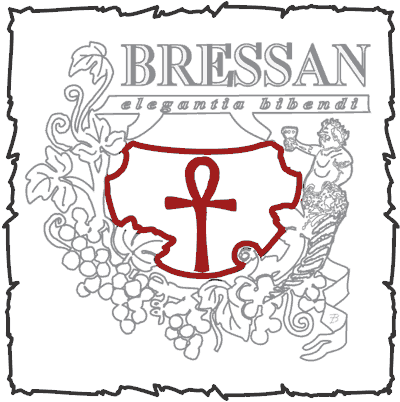 |
|
|
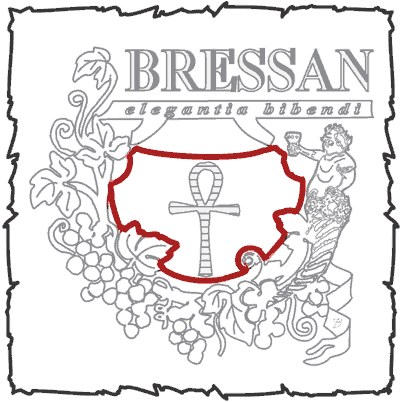 |
|
The above-mentioned Cauldron represented for Indo-European cultures the ideas of regeneration and changing, which can be compared to the fermentation processes which determine the transformation of grapes into wine. |
|
|
And Wine also has a cultural aspect that has been known for thousands of years in the most erudite and advanced cultures, as it is second to none in its allegorical use. It is usually a symbol of blood (for the Greeks it was the blood of the god Dionysus), because of its colour and because of its derivation from the lymph of the vine. It has been often considered as an elixir of life long and immortality (for instance according to the Semitic peoples, the Greeks and the Taoists). In Ancient Greece sacrifices of wine to the gods of the nether world were prohibited, because wine was the drink of the living. Because of its inebriating effect it was also regarded as an instrument to obtain esoteric knowledge. In Islamic culture wine was - among other meanings - the drink of divine love, a symbol of spiritual knowledge and of the richness of eternity; according to Sufi philosophy, the existence of soul before creation was imagined as pervaded by the wine of eternity.
According to biblical tradition, wine is a symbol of the joy and richness of the gifts from God (Psalms 104 (103), 15). For Christianity, during eucharistic transubstantiation wine achieves its holiest and deepest meaning, as it is transformed into the blood of Christus (Matthew 26, 28 pa; Cor. 10,16).
Continuing with our analysis, we would like to focus on the grapevine-shoots and on the grape bunches which frame the left part of the emblem.
|
|
|
The Grapevine is a symbol of abundance and life. In Ancient Greece it was devoted to Dionysus; but it was a symbol of rebirth as well, related to the Dionysian mysteries, which celebrated the god of Ecstasy as the lord both of death and of the rebirth of every life form.
|
|
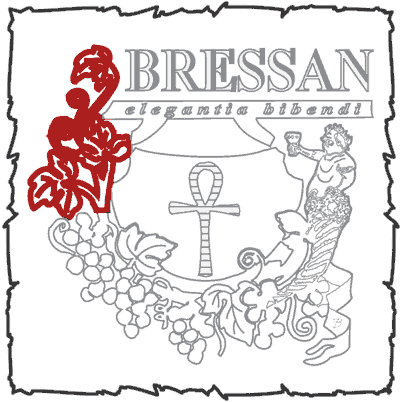 |
|
|
|
Within the sphere of Jewish and Christian symbolism, the grapevine is a sacred shrub with multi-faceted symbolic value: it was regarded as an image of the Jewish people (Jeremiah 2,21), where God will offer the same care for his people which Man gives to his grapevines. It was also the Messiah’s tree, and in the Old Testament the Messiah himself is compared to a grapevine. Christ compared himself to the true grapevine which, thus pervaded with life energy brings forth his faithful like grapevine-shoots. That is to say: only those who receive their strength directly from Him will bear true fruit (John 15,1). The fenced-in vineyard is also a symbol for the chosen people; later it was used allegorically to represent the Christian Church.
|
|
|
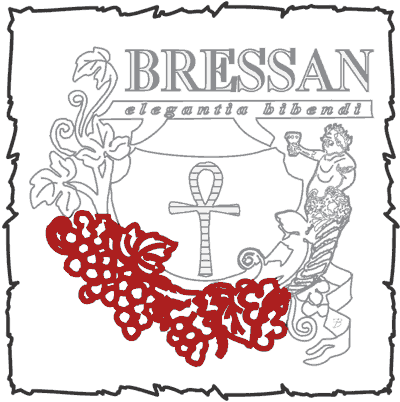 |
The grape cluster - which was brought by the explorers of the promised land (Nemesis 13, 23) was a symbol of promise: the same promise the Bressans renew and maintain each year with their wine production. Their imperative is that the highest quality should be married to absolute genuineness.
Last but not least in our historical religious discussion, we might still mention that the grape cluster on paleo-Christian sarcophaguses is a symbolic image of the reign promised in the here-after, to which the deceased has moved on.
|
|
| Having reached the end of our dissertation on the grape, let us continue with our explanation of the right side of the emblem, where a horn of plenty overflowing with grapes can be seen, with a ruddy Bacchus sits as on a throne. |
|
|
The Cornucopia (or Horn of plenty): An attribute of Fortune or of the personification of autumn (harvest-time), an emblem of the overabundance of fortune and of a rich crop; in former times it was considered to be the horn of the goat Amalthea or of the river god Acheloos, whose horn had been broken off by Hercules during a battle.
|
|
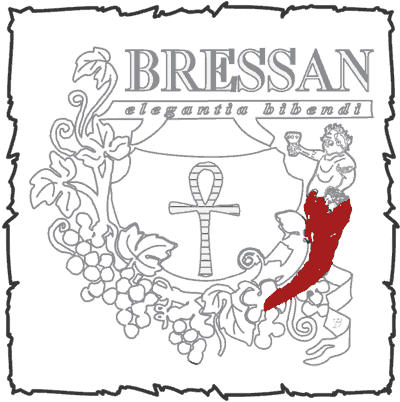 |
|
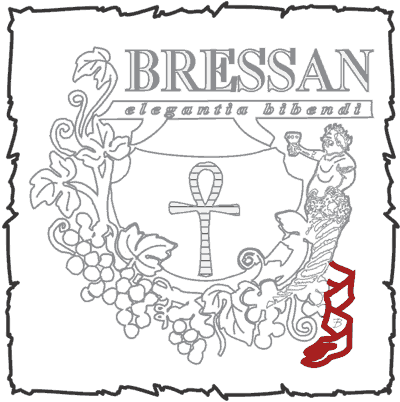 |
On the right side, below the horn of plenty, we can see a Waving Banner, which indicates the beginning of an undertaking, a start, the power of change aimed at the future: principles never ignored by the Bressans, as they respect company philosophy and carry on their scrupulous and meticulous research in order to improve constantly an already excellent product. |
|
|
Bacchus, the god of wine, was the son of Jupiter and Semeles and was usually represented as young and handsome, with horns (symbolizing the boldness deriving from wine) on his head and with a thyrsus (a stick covered in ivy and grapevine-tendrils) in his hands. But he can also be a big-bellied man, crowned with ivy (considered effective against drunkenness), raising his cup.
|
|
 |
|
|
The Cup - which is passed from hand to hand - is a symbol of friendship and union, or - in its christian meaning - of joy, of being close to God. Bacchus also had a retinue, to which old Silenus (his tutor), satyrs and maenads (or bacchantes) belonged. Feasts called “Liberalia” or “Bacchanalia” (17 March) were consecrated to him, famous for their dissoluteness.
|
|
 |
|
|
As this religious custom of the Romans is a derivation of the Greek use, it confirms once more the famous saying by Horace (the satyrical Roman poet): “Graecia capta ferum victorem cepit” (captured Greece captured the fierce winner). In Ancient Greece the Donysian festivals were celebrated every year: the “little Dionysia” or “Country Dionysia” in December and the “Big Dionysia” in March; they consisted in a solemn procession which represented the triumph of Dionysus, accompanied by his retinue: Satyrs (among whom old Sylenus riding a donkey), Maenads agitating torches and thyrsuses, men and women simulating drunken states - or even being truly drunk - and invoking the god.
By explaining the meaning of our brand we inted to make clear that we never do anything inconsiderately. Let us take this opportunity to thank you for your kind interest!
|
|
|
|
|
|
|
|
|
|
|
|
|
|
|
|
|